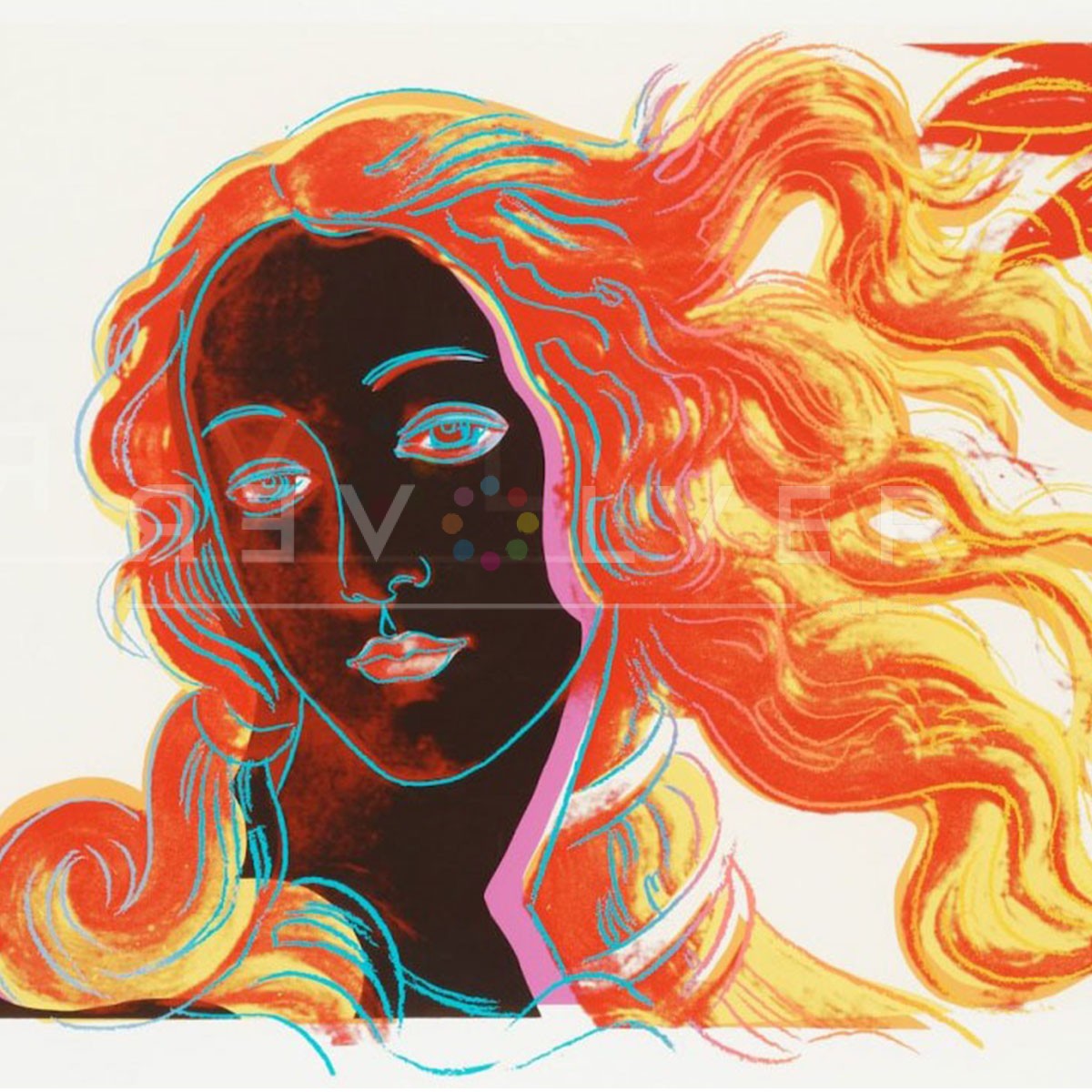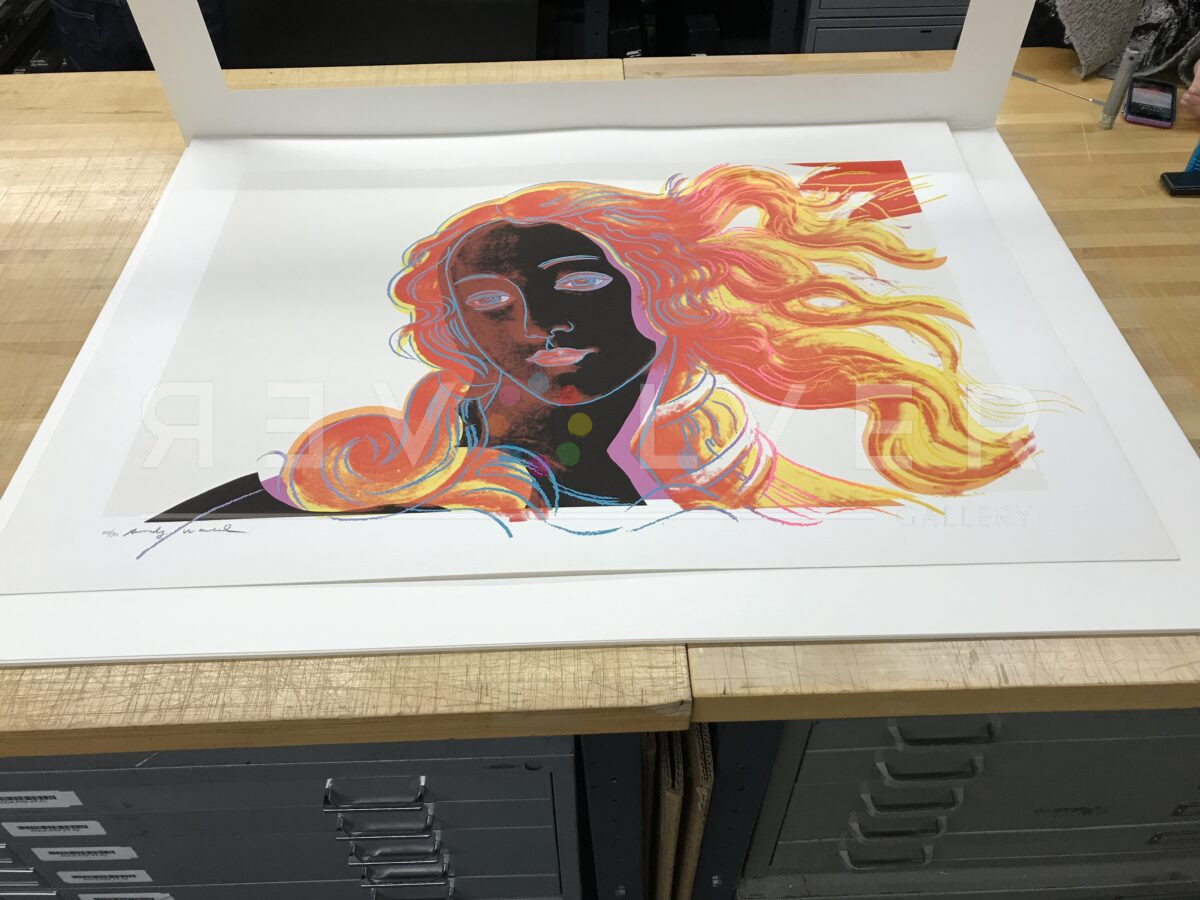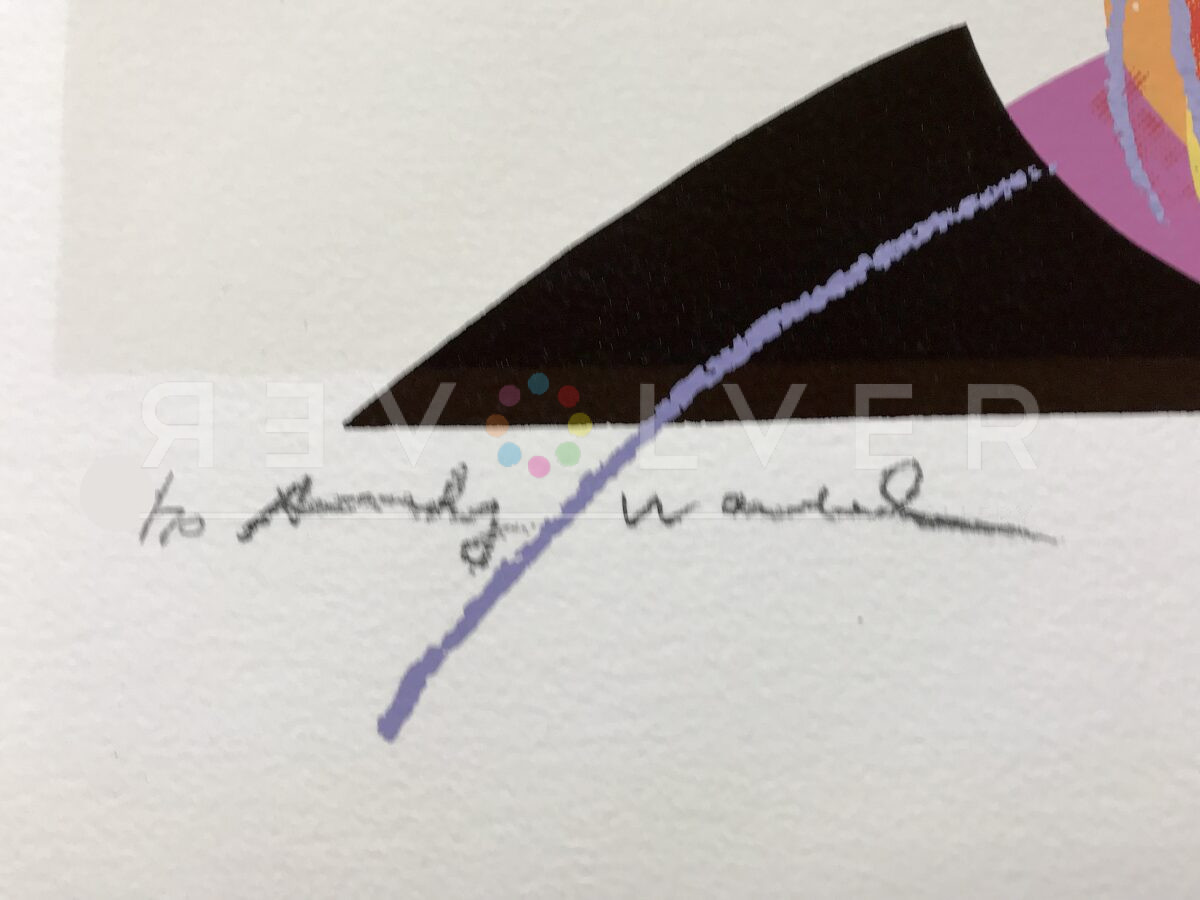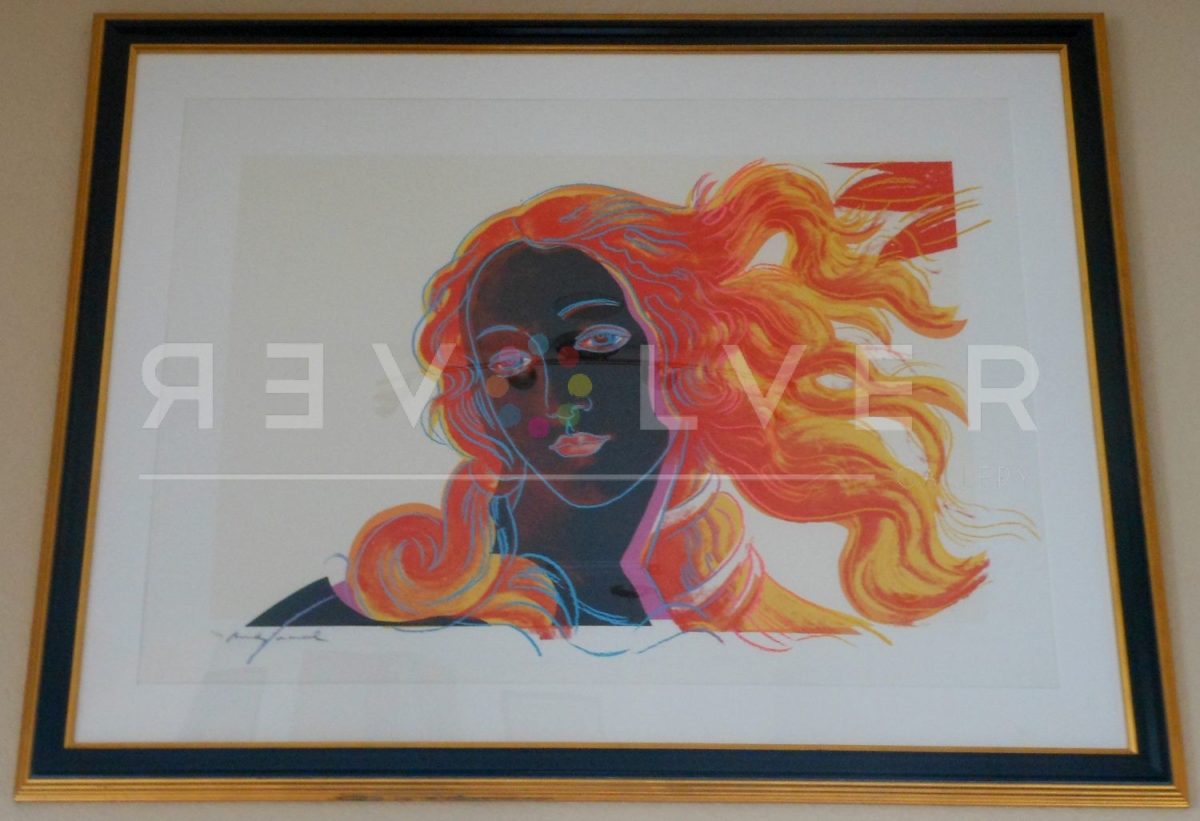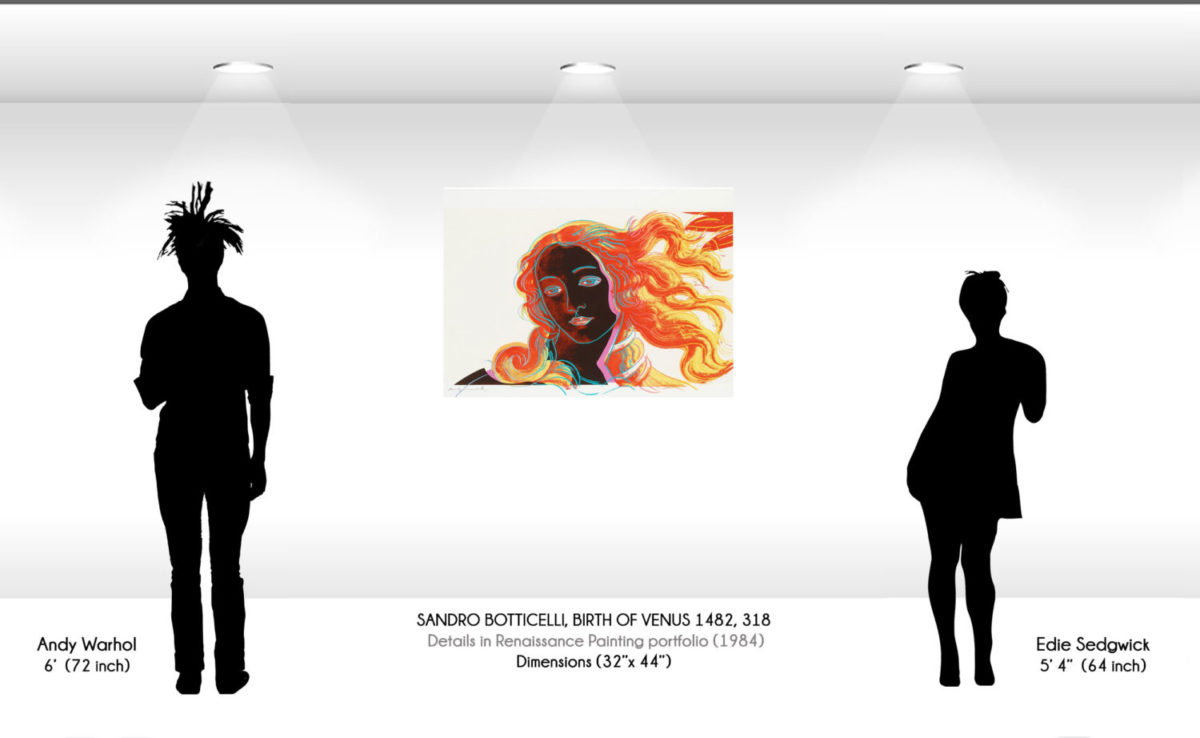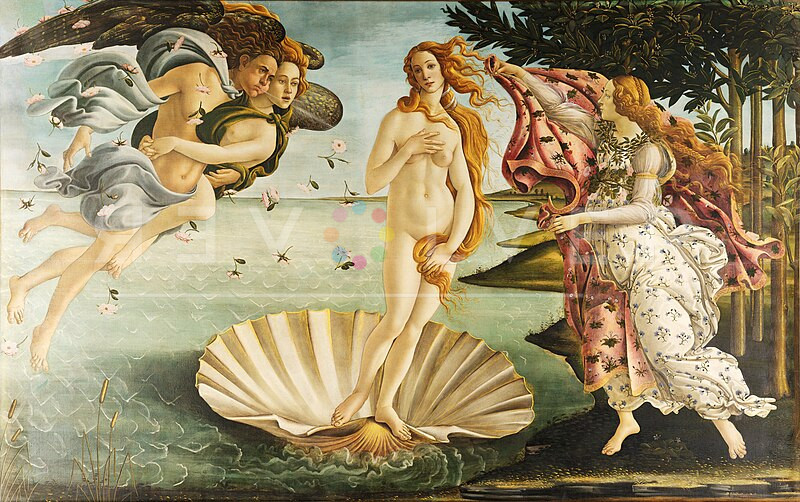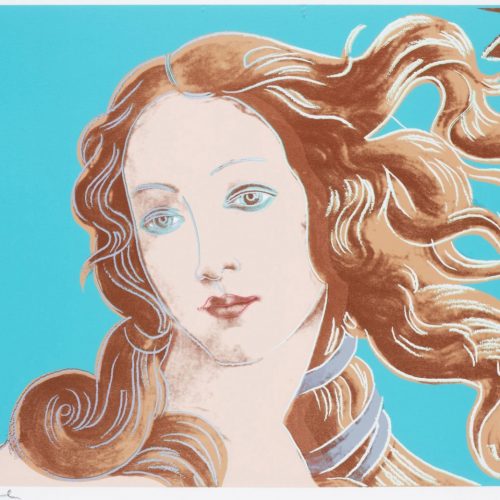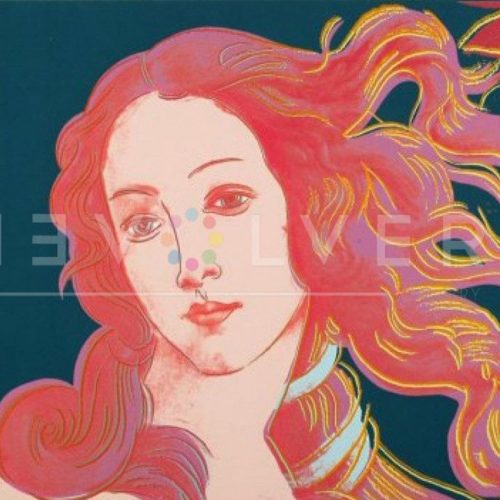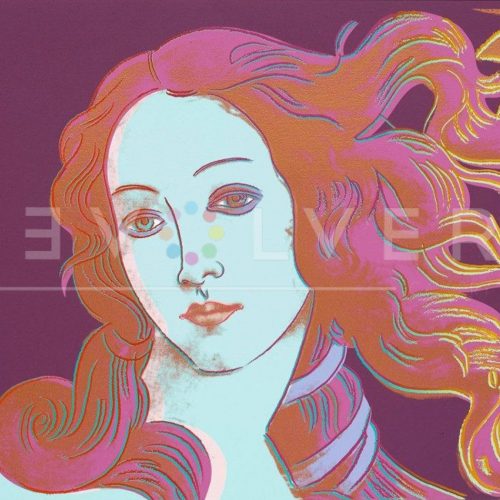Birth of Venus 318 by Andy Warhol is a screenprint from his Birth of Venus (1984) suite, which recalls Botticelli’s illustrious 15th century composition. The Details of Renaissance Paintings collection revisits multiple works of art such as Leonardo Da Vinci’s The Annunciation, Piero della Francesca’s Brera Madonna, and Paolo Uccello’s St. George and the Dragon. Warhol created four prints centered solely on the Roman goddess of beauty and love. Whereas the original artwork presents a whimsical scene including other mythological figures, Warhol cropped the image to bring attention to the goddess’ facial expression. He gives Venus the Pop treatment, making her over as a star of the modern age. In doing so, Warhol simultaneously paid homage to the past and asserted the prominence of contemporary culture. A trial proof from the Birth of Venus series ranks amongst Warhol’s top 10 most valuable prints of all time.
During his college days, Warhol aimed to become a fine artist. His studies at the Carnegie Institute doubtlessly exposed him to the most well respected works of the art world. Over time, these paintings held firm in his mind. Sometime in 1963, well after he had abandoned fine art for commercial and Pop art, The Mona Lisa came to New York. Mesmerized by the hysteria one painting could produce, Warhol composed Thirty Are Better Than One. He used his silkscreen process to repeat Da Vinci’s portrait thirty times, commoditizing the supposedly sacred work.
Warhol’s Birth of Venus suite embraces the same concept. While many artists might consider it sacrosanct to appropriate a masterwork, Warhol’s open defiance indicates his desire to cause a stir and shake up the art world. After all, one might say that his greatest talent lay in his ability to break the mold. Here he claims nothing is sacred, not even famous art that has been revered for centuries; anything can become a product, a commodity for the masses. Furthermore, through these prints Warhol continued to assert his belief that art is for everyone, not an elite few.
In Birth of Venus 318, Warhol leaves the background white to showcase Venus with a darker complexion. In doing so, he alleges that humanity’s concept of beauty has transformed. The print highlights the goddess’ flaming red hair, the bright red, yellow and pink hues giving the portrait its epochal Pop stance. Compared to the demure Venus in the original painting, Warhol’s Venus appears bold and powerful. At the same time, Warhol magnifies her face and uses blue line work to accentuate her eyes, revealing a sense of melancholy in her expression. He seems to be asking what Venus herself thinks of her status as an icon of beauty.
Warhol saw a re-emergence of financial and critical success in the 1980s, partly due to his affiliations with younger artists, like the enigmatic Jean-Michel Basquiat. He published many successful portfolios in this time, including Reigning Queens, Endangered Species, and the various Renaissance works. Despite the success of the Details of Renaissance Paintings, Warhol expressed disillusionment with the work. He spoke of the process in his diaries: “The Details. I hate them. Like details of the Botticelli ‘Venus.’ But people are loving these best. It makes you wonder”. Regardless of Warhol’s scrutiny, Birth of Venus 318 accomplished a feat similar to that of his Ads and Myths collections. Warhol knew these famous works already held mainstream eminence; by inducting them into the Pop Art movement, he capitalized on their notoriety and revolutionized their imagery for new generations.
Photo credit: Sandro Botticelli, The Birth of Venus (c. 1484–1486). Tempera on canvas. 172.5 cm × 278.9 cm (67.9 in × 109.6 in). Uffizi, Florence

